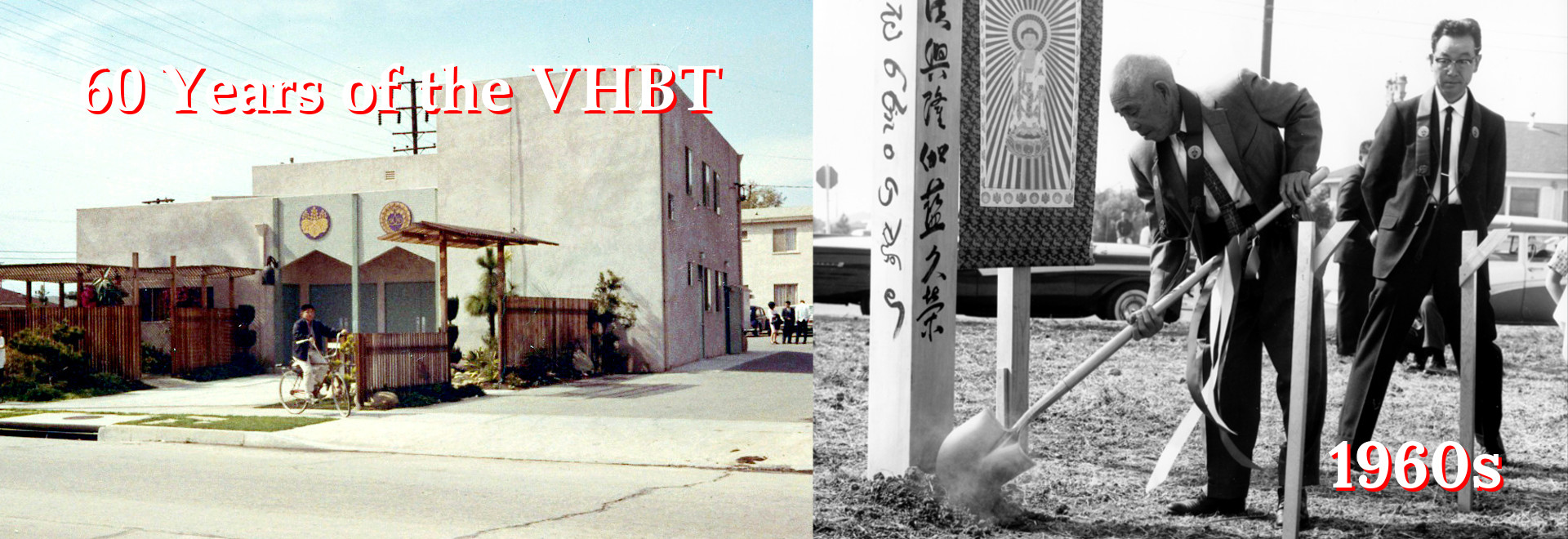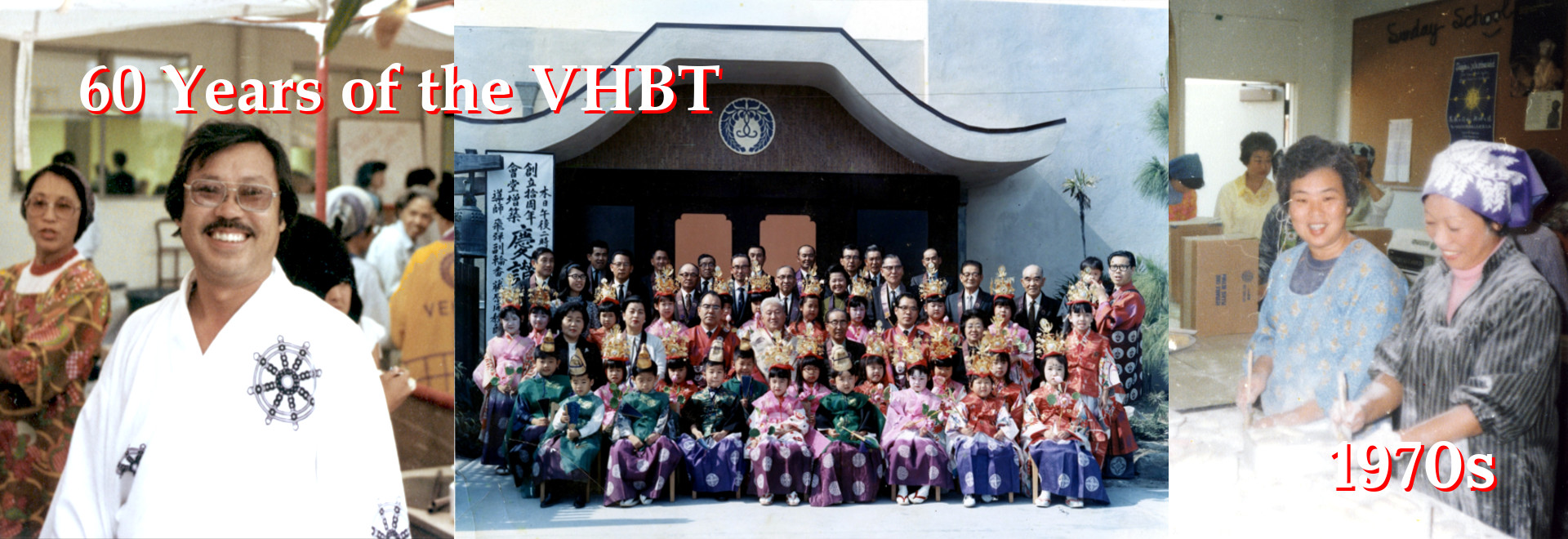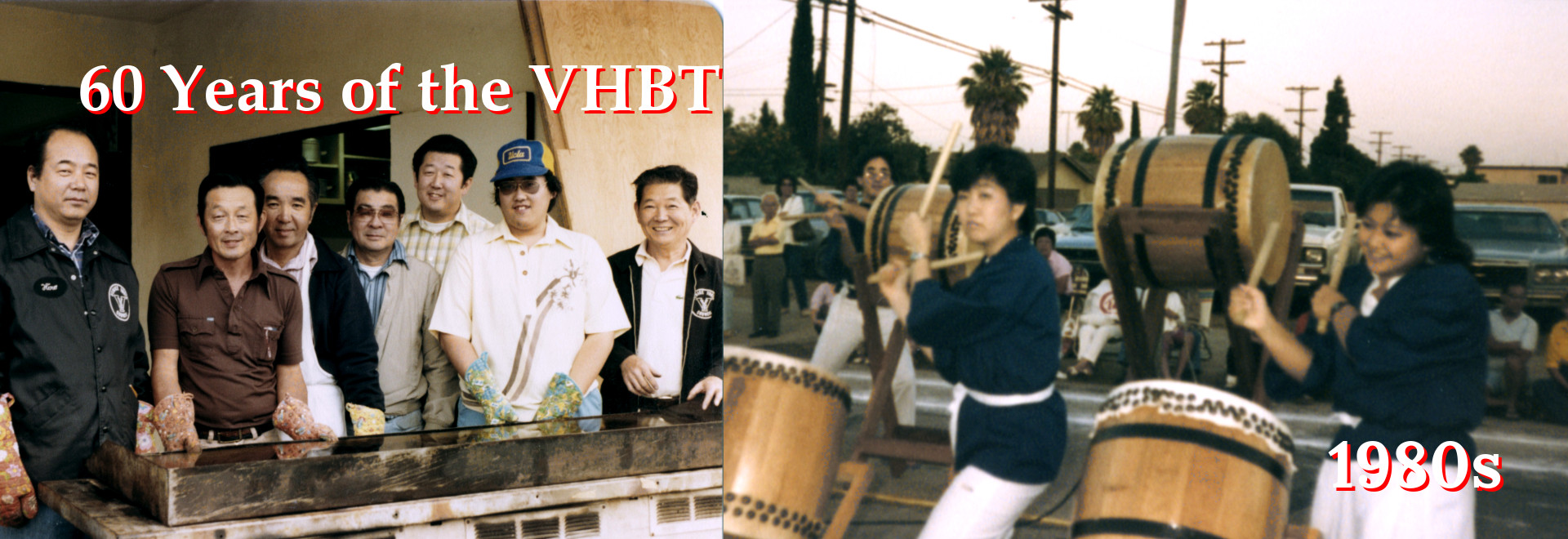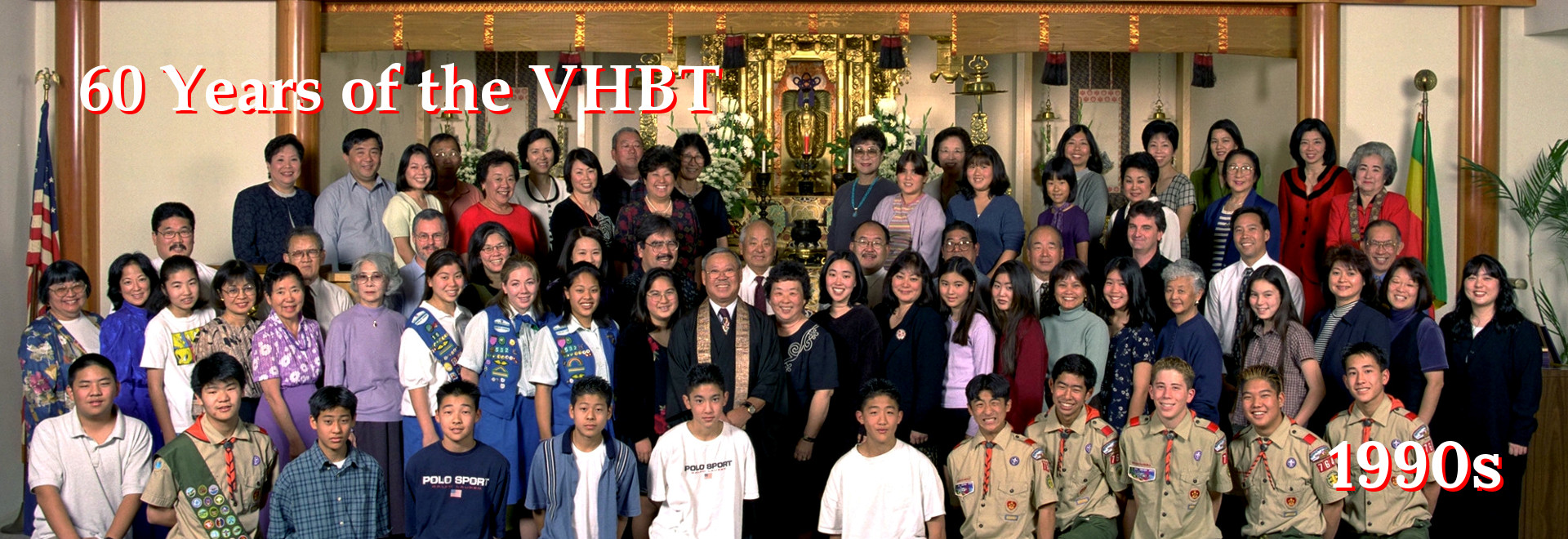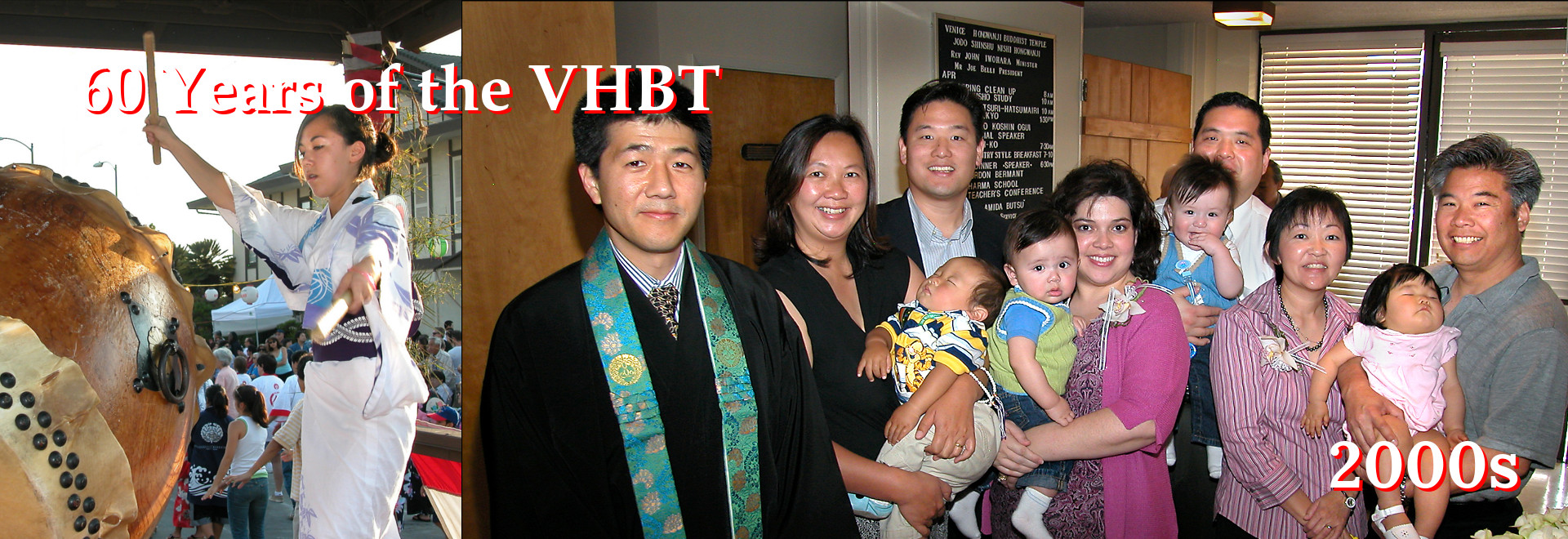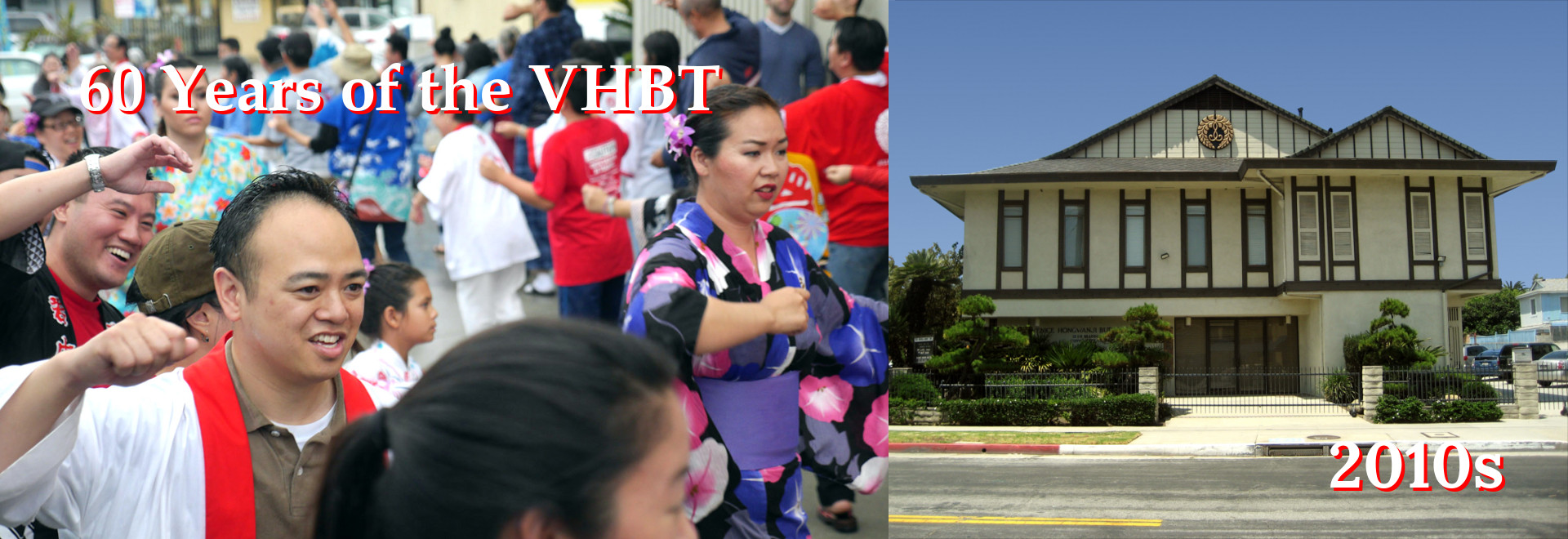What we “do.”
Our Sunday Family and Dharma School Morning Service begins with the ringing of the kansho (service bell). Prior to the ringing of the kansho, the onaijin (inner altar area) is decorated with flower arrangements and prepared by lighting candles, burning incense, and the offering of obuppan, or the food offering of rice to the Buddha. The incense burner in the gejin (outer altar area, the area where everyone sits) is also lit so that oshoko (incense burning) can be done by everyone who comes to the service. After the ringing of the kansho, the daikin (large gong) is struck twice and the chanting of the Sanbutsu-ge (“Verses in Praise of the Buddha”) begins. The Sanbutsu-ge that we chant is a Chinese translation of a text originally written in Sanskrit.
Following the chanting, our service chairperson recognizes, introduces, and welcomes any and all visitors to the temple in English and Japanese. After getting to know everyone, we read the Golden Chain and sing a sanbutsu-ka (“Song in Praise of the Buddha”). The Three Treasures are then read in both English and Japanese and is followed by the English Dharma message for the day. We then read the Six Paramita in both English and Japanese. Although our Sunday service attendees are used to the reading of the Six Paramita, this is a reading unique to the Venice Hongwanji and was introduced by the late Rev. Ryuei Masuoka who helped to found the Venice Hongwanji as a temple. We then recognize birthdays, make announcements, sing one more sanbutsuka, and end service with a Buddhist reading that both reminds us of the impermanent nature of our lives and how, because of that, we would want to live our lives as compassionately as possible. Following all this, we dismiss both the children and adults to their Dharma School classes. While the children are moving off to their classes, the obuppan is taken down, and the candles are extinguished. People who have not had time to do oshoko are also encouraged to do oshoko at this time. I mention these things to help point out that a lot of things happen during Sunday service.
What’s the big deal?
From a “cognitive” point of view, our Sunday service is robust with sensory stimulation. This is important because an environment rich in sensory information is highly conducive to the cognitive development of children. These considerations are particularly important now because much of our public education can no longer afford to provide as rich an environment as it once used to. For example, many schools are forced to eliminate its music programs.
Although no one will mistake the sanbutsuka as anything other than singing, most people tend to neglect the musical nature of chanting. Because this aspect of chanting is often overlooked, it is very easy for us to overlook the benefits we provide our children just by having them chant. For example, one study has shown that giving a group of three-year-olds group singing lessons dramatically improved their spatial-temporal reasoning skills. Chanting, and the controlled rhythmical breathing it promotes, also helps a person to relax and focus. These two traits are probably very important in fostering what we would call patience.
Whenever someone comes to the temple, however, the first thing they will notice is the onaijin. The onaijin, as a symbolic representation of the Buddhist realm of enlightenment, tries to direct our six senses towards enlightenment and away from what Buddhism has come to call the three poisons of greed, anger and stupidity. These elements are what lead us to be bound to the world of suffering or the world of birth-and-death. The onaijin, in other words, is trying to help us discover the world of enlightenment. Because of this, the altar area — besides being the focus of the ritual service — also has the function of encouraging all of us to explore our environment. The different altar pieces used for the ritual service also vary in terms of size, shape, color, and usage. Because of this, children are exposed to items that allow them to practice observing and labeling things that can also help them to understand the world outside the temple as well.
As participants of the ritual service, we become engaged in the touching, handling, and rubbing of such things as the o-nenju (mindfulness beads), ground incense, and service books to name a few. In opening up the service book, however, our children are also exposed to several different languages that include English, Chinese and Japanese. They are also exposed to terms in Sanskrit and Pali. They smell the incense; hear the bells, gongs and voices. They are exposed to many ethnic treats and are challenged to think. All six senses are engaged.
Finally, part of the reason that any parent would want to have their children participate in a religion is for the emotional stability that religion has to offer. Research in cognitive development indicates that neural networks continue to develop into the teens, especially those for emotion. This point should probably not be overlooked especially when we are no longer surprised to hear words like “angry,” “disenfranchised,” and “lost” used to describe our youth. The learning environment that the Dharma School is able to provide can help to promote such skills and emotions as introspection, gratitude, appreciation, and, as mentioned previously, patience.
These things that are being discussed are not trifle. Our Dharma School staff is aware of the huge potential that can be found in religious education and is also part of the reason why our entire staff has gone through a rigorous training program (approximately 70 hours of class time over a 12 month period) that is recognized and endorsed by the Buddhist Churches of America through the Dharma Award.
Rev. John Iwohara
October, 2012
